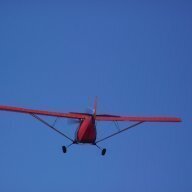Rillert,
Mate, that is nothing. My flying instructor (on my 4th lesson) missed the runway completely, landed 30 degs away on a 'spare' sand strip 200 m long in the bush on one wheel, we were surely short to brake to anything I could see, and particulary to the line of trees ahead, still running fast, but instead he added the power up, after that it was obvious to me he cannot successfully take off over the trees in front of us or anything else, surely this was not touch and go damn ride now, so yeah, what now ?, but he with the left wing 6 inches low and full power turned on one wheel around into another runway around the corner, where we stopped, he checked the mags saying it is ok for another take off. They do it to test you.
Check the record of your flying instructor, his reputation over all, talk to former students, his family members if possible....and, if you find his latest graduate is the Solicitor General you are right.
Tony Milan



